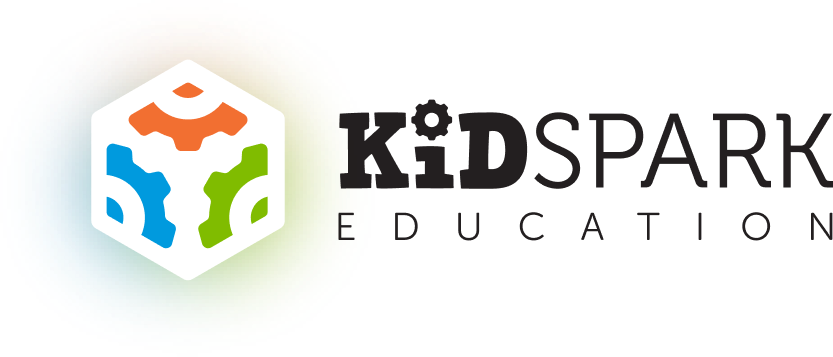
After ten years of research on STEM education for preschoolers and elementary students, we've got a lot to say about the importance of block play for young children as well as the importance of STEM mentors. In fact, our research shows that mentors (teachers, parents, grandparents....) aren't simply important—they're critical in helping children feel confident and capable in STEM.
Below are some tips that you can use when leading block play STEM activities for preschoolers and early elementary students, particularly if they're using Kid Spark's ROK Blocks Mobile STEM Labs. Even if you don't use the ROK Blocks Mobile STEM Lab, you'll find a lot of helpful suggestions below.
1. Ask a lot of questions.
Questions provide more opportunity for the use of language for communication, strengthens adult-child connection, and allows insight into development/interests of the child, which can be useful in future interactions.
2. Do a group introduction.
A group presentation in circle time may encourage more involvement with the mats found in the ROK Blocks Mobile STEM Lab or other visual cues to spark students' ideas for what they can build. Adult mentors can go over the process of how the children can interact with the mats, call attention to particular aspects of the material, engage children in using the materials for other creative acts such as story telling, labeling, planning, recalling, etc.
3. Build “aspirational objects.”
Imitation serves an important purpose in the life of a young child. Children naturally want to imitate what they see or hear whether it is songs, stories, games or texts. Having aspirational objects displayed during their play inspires creativity, generates interest, and provides an opportunity for adult-child interaction.
4. Integrate stories as much as possible.
Children love storytelling and this can be a wonderful tool to impart instruction. In some interactions, adults may tell stories during construction (using the blocks as characters/pieces in the stories) or in others, allowing children to reflect on their stories that have been completed. Writing children’s stories about their creations is another way to help children develop their communication skills. By personalizing the constructed piece, the children are easily able to relate to the construction process and seem to also enjoy themselves more. Therefore, a problem of attaching blocks together could be transformed into “my dog needs a head” etc.
5. Employ demonstration.
When children have difficulty with block assembly, showing them how to solve their problem using your own model is very effective. Resist the temptation to just snap it into place for them. This is especially true if the child has been working with you for awhile and you are aware of their abilities. Challenge and difficulty offers growth. Demonstration of other children’s work is often helpful.
6. Be specific with encouragements and compliments.
Instead of saying that “I like what you built,” say “I like how you put that extra wheel on your car.” Not only can this open up a chance for more communication, it can also help to extend the child’s vocabulary in relation to something of immediate interest.
7. Play collaborative games with the blocks whenever possible.
The adult mentor can start to construct a piece, but rather than finishing the piece, he or she can enlists children’s help and present the situation as a “problem,” needing children’s help to fix it. Try to encourage group games where the goal is collective instead of competitive. This helps build 21st century skills in children.
8. Respect the different ways children learn.
If a child doesn’t understand one kind of instruction, keep trying in different ways. A child may learn better by teaching others (interpersonal) or by using their bodies, hands, moving (bodily-kinesthetic) etc., visually through images/pictures (spatial), linguistic (through conversations, engaging in discussions), or self-directing (intrapersonal). Adult mentors should challenge themselves to be creative in interactions and creative in how the blocks are put together.
9. Learn to listen.
In adult-child interaction, adults can easily talk too much. Challenge yourself to be observant and extra conscious of your communication. With preschool children in particular, their verbal communications are often in a developing stage. Some children need to be slowly integrated into social circumstances and given space before communication is possible.
10. Avoid making assumptions about the children’s creations.
Rather than asking “Is that a car?”, choose words that allow the child to describe their creation. Open ended questions or statements such as “Tell me about what you made” respects their individual creativity and open up further dialogue (rather than receiving only a ‘yes’ or ‘no’). After all, the object that looks like a car may in fact be a dinosaur.
11. Be flexible.
This covers many circumstances. Learning is not always linear, with one foreseeable end. Having specific goals of instruction is important, but being too rigid removes the possibility for unexpected learning. Being flexible and open to new interpretations allows space for creativity and spontaneity to arise. For example, if the child attaches the wheels on the wrong side of his car, the adult mentor could respond with how “cool” it is and admires “how (the car) can go both ways”. Children might notice their “mistakes” and make the correction independently of direct help from the adult.
These tips will help you become even more effective as a STEM mentor during your STEM activities for preschoolers and early elementary students. It'll take some practice but we at Kid Spark know that being a STEM educator for preschool and elementary students is possible for any caring adult. Please don't hesitate to reach out with additional questions—we're here to help.

